Related Research Articles

An assembly line is a manufacturing process in which parts are added as the semi-finished assembly moves from workstation to workstation where the parts are added in sequence until the final assembly is produced. By mechanically moving the parts to the assembly work and moving the semi-finished assembly from work station to work station, a finished product can be assembled faster and with less labor than by having workers carry parts to a stationary piece for assembly.
The automotive industry in the United Kingdom is now best known for premium and sports car marques including Aston Martin, Bentley, Caterham Cars, Daimler, Jaguar, Lagonda, Land Rover, Lister Cars, Lotus, McLaren, MG, Mini, Morgan and Rolls-Royce. Volume car manufacturers with a major presence in the UK include Nissan, Toyota and Vauxhall Motors. Commercial vehicle manufacturers active in the UK include Alexander Dennis, Ford, IBC Vehicles, Leyland Trucks and London Electric Vehicle Company.
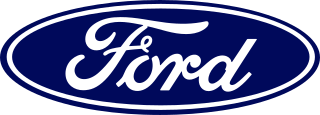
Ford Motor Company of Australia Limited is the Australian subsidiary of United States-based automaker Ford Motor Company. It was founded in Geelong, Victoria, in 1925 as an outpost of Ford Motor Company of Canada, Limited. At that time, Ford Canada was a separate company from Ford USA. Henry Ford had granted the manufacturing rights of Ford motor vehicles in the British Empire, to Canadian investors.
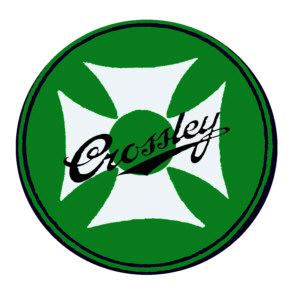
Crossley Motors was an English motor vehicle manufacturer based in Manchester, England. It produced approximately 19,000 cars from 1904 until 1938, 5,500 buses from 1926 until 1958, and 21,000 goods and military vehicles from 1914 to 1945.

The Highland Park Ford Plant is a former Ford Motor Company factory located at 91 Manchester Avenue in Highland Park, Michigan. It was the second American production facility for the Model T automobile and the first factory in history to assemble cars on a moving assembly line. It became a National Historic Landmark in 1978.

The Ford Piquette Avenue Plant is a former factory located within the Milwaukee Junction area of Detroit, Michigan, in the United States. Built in 1904, it was the second center of automobile production for the Ford Motor Company, after the Ford Mack Avenue Plant. At the Piquette Avenue Plant, the company created and first produced the Ford Model T, the car credited with initiating the mass use of automobiles in the United States. Prior to the Model T, several other car models were assembled at the factory. Early experiments using a moving assembly line to make cars were also conducted there. It was also the first factory where more than 100 cars were assembled in one day. While it was headquartered at the Piquette Avenue Plant, Ford Motor Company became the biggest U.S.-based automaker, and it would remain so until the mid-1920s. The factory was used by the company until 1910, when its car production activity was relocated to the new, bigger Highland Park Ford Plant.
Metropolitan-Vickers, Metrovick, or Metrovicks, was a British heavy electrical engineering company of the early-to-mid 20th century formerly known as British Westinghouse. Highly diversified, it was particularly well known for its industrial electrical equipment such as generators, steam turbines, switchgear, transformers, electronics and railway traction equipment. Metrovick holds a place in history as the builders of the first commercial transistor computer, the Metrovick 950, and the first British axial-flow jet engine, the Metropolitan-Vickers F.2. Its factory in Trafford Park, Manchester, was for most of the 20th century one of the biggest and most important heavy engineering facilities in Britain and the world.

Willys Overland Crossley was a company jointly owned by Crossley Motors and Willys-Overland. They had factories in Stockport, England; Berlin, Germany; and Antwerp, Belgium. The company was formed in 1919 and continued until 1934. They manufactured cars, buses and trucks.

Ford of Britain is a British wholly owned subsidiary of Ford Technologies Limited, itself a subsidiary of Ford International Capital LLC, which is a subsidiary of Ford Motor Company. Its business started in 1909 and has its registered office in Laindon, Essex. It adopted the name of Ford of Britain in 1960.
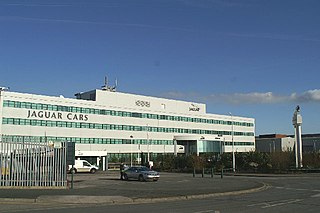
Jaguar Land Rover Halewood is a Jaguar Land Rover factory plant in Halewood, Merseyside, England, and forms the major part of the factory complex in Halewood which is shared with Ford of Britain who manufacture transmissions at the site, and who opened the site in 1962 as their Halewood Body & Assembly plant.
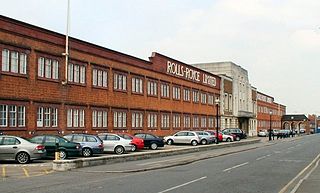
Rolls-Royce was a British luxury car and later an aero-engine manufacturing business established in 1904 in Manchester by the partnership of Charles Rolls and Henry Royce. Building on Royce's good reputation established with his cranes, they quickly developed a reputation for superior engineering by manufacturing the "best car in the world". The business was incorporated as Rolls-Royce Limited in 1906, and a new factory in Derby was opened in 1908. The First World War brought the company into manufacturing aero-engines. Joint development of jet engines began in 1940, and they entered production. Rolls-Royce has built an enduring reputation for development and manufacture of engines for defence and civil aircraft.

Ford France is the French subsidiary of the American automaker Ford Motor Company, which existed under various names between 1916 and 1954, when Ford sold the manufacturing business to Simca.

Ford-Werke GmbH is a German car manufacturer headquartered in Niehl, Cologne, North Rhine-Westphalia. It is a subsidiary of Ford Motor Company, which operates two large manufacturing facilities in Germany, a plant in Cologne and a plant in Saarlouis. The logo is blue with white lettering.

Trafford Park is an area of the Metropolitan Borough of Trafford, Greater Manchester, England, opposite Salford Quays on the southern side of the Manchester Ship Canal, 3.4 miles (5.5 km) southwest of Manchester city centre and 1.3 miles (2.1 km) north of Stretford. Until the late 19th century, it was the ancestral home of the Trafford family, who sold it to financier Ernest Terah Hooley in 1896. Occupying an area of 4.7 square miles (12 km2), it was the first planned industrial estate in the world, and remains the largest in Europe well over a century later.
Percival Lea Dewhurst Perry, 1st Baron Perry KBE was an English motor vehicle manufacturer who served as chairman of Ford Motor Company Limited in Britain for 20 years from its incorporation in 1928, completing almost a lifetime's work with Henry Ford. He also led the establishment of Slough Estates.

A substantial car industry was created in Australia in the 20th century through the opening of Australian plants by international manufacturers. The first major carmaker was Ford Australia and the first Australian-designed mass production car was manufactured by Holden in 1948. Australian manufacture of cars rose to a maximum of almost half a million in the 1970s and still exceeded 400,000 in 2004. Australia was best known for the design and production of 'large' sized passenger vehicles. By 2009 total production had fallen to around 175,000 and the Australian market was dominated by cars imported from Asia and Europe.
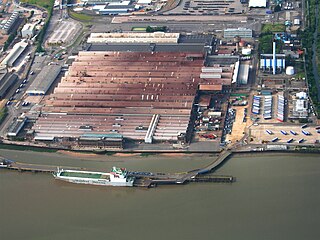
Ford Dagenham is a major automotive factory located in Dagenham, London, operated by the Ford of Britain subsidiary of Ford Motor Company. The plant opened in 1931 and has produced 10,980,368 cars and more than 39,000,000 engines in its history. It covers around 475 acres and has received over £800 million of capital investment since 2000.
Manchester is one of the principal cities of the United Kingdom, gaining city status in 1853, thus becoming the first new city in over 300 years since Bristol in 1542. Often regarded as the first industrialised city, Manchester was a city built by the Industrial Revolution and had little pre-medieval history to speak of. Manchester had a population of 10,000 in 1717, but by 1911 it had burgeoned to 2.3 million.

The Ford Southampton plant was a motor vehicle assembly plant, located in Swaythling on the north eastern outskirts of Southampton, England. It was the western European centre for production of the Ford Transit van. The last vehicle was produced on 26 July 2013, ending Ford's vehicle assembly operations in the UK.

Ford Ireland is the Irish subsidiary of the United States-based automaker Ford Motor Company. With an assembly plant for motor vehicles, it was part of the automotive industry in Ireland.
References
- 1 2 3 4 5 6 7 8 9 10 11 12 13 14 15 "Ford of Britain: Yesterday today...". Autocar . 128 (nbr 3766): 52–54. 18 April 1968.
- ↑ "[Ford of Britain] Milestone". Autocar . 128 (nbr 3766): 116–118. 18 April 1968.
- ↑ Nicholls 1996 , pp. 63–65
- ↑ "Manchester Ship Canal". Manchester 2002. Archived from the original on 9 December 2010. Retrieved 20 November 2010.
- 1 2 Nicholls 1996 , pp. 103–104
- ↑ Rowlinson 1947 , p. 56
- ↑ Sir Stanley Hooker (4 January 1985). Not much of an Engineer. pp. 58–59. ISBN 1-85310-285-7.
- ↑ "Ford in Europe: The First Hundred Years". Serious Wheels. Retrieved 20 November 2010.
